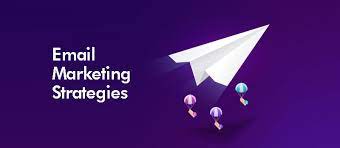Email marketing is one of the most reliable and cost-effective marketing channels. According to a report by the Direct Marketing Association, email marketing has an average ROI of 4400%. However, achieving high ROI through email marketing requires a well-executed strategy. Here are the top 5 proven strategies to boost your ROI through email marketing.
1. Personalization
Personalization is a strategy that involves using customer data to create more relevant and personalized email content. By personalizing your email content, you can increase engagement and conversions.
The first step in personalization is collecting customer data. This can be done through sign-up forms, surveys, and other data collection tools. Once you have collected this data, you can use it to segment your email list based on customer demographics, preferences, and behavior.
With segmented email lists, you can create more targeted email campaigns that are specific to each customer’s needs, interests, and behaviors. This makes your email content more engaging and relevant, increasing the chances of higher conversion rates and ultimately, higher ROI.
2. Segmentation
Segmentation is a strategy that involves dividing your email list into smaller sub-groups based on their interests, preferences, behavior, and demographics. This allows you to create targeted email campaigns that are specific to each sub-group, increasing relevance and engagement.
When segmenting your email list, consider factors such as customer demographics, behavior, preferences, purchase history, and engagement levels. For instance, you can create segments for new subscribers, loyal customers, inactive subscribers, customers who have made a recent purchase, among others.
By sending more targeted and relevant email campaigns to each segment, you can increase engagement, open rates, click-through rates and ultimately, ROI.
3. Automation
Automation is a strategy that involves using technology to automate your email campaigns. It involves creating pre-written email sequences that are triggered by specific actions or events.
One of the most common automated email sequences is the welcome series. This series is triggered by a user’s sign-up or subscription and consists of several emails that introduce the user to your brand and products. Other automated email sequences include abandoned cart reminders, post-purchase follow-ups, re-engagement campaigns, and many more.
By automating your email campaigns, you can save time and resources while still delivering relevant and timely email content to your subscribers. This increases customer engagement and conversion rates, leading to higher ROI.
4. Testing
Testing is a strategy that involves testing different aspects of your email campaigns to optimize performance. By testing elements such as email subject lines, images, calls-to-action, and email content, you can identify what works best for your audience and refine your email campaigns accordingly.
A/B testing, also known as split testing, is one of the most popular testing techniques. With A/B testing, you create two versions of an email campaign and send them to two randomly selected groups. You can then track the performance of each campaign and determine which one performed better.
By testing and optimizing your email campaigns regularly, you can improve engagement rates, open rates, click-through rates, and conversions, leading to higher ROI.
5. Optimization
Optimization is a strategy that involves optimizing your email campaigns for better performance. It involves identifying areas that need improvement and making changes to improve email content relevance and customer engagement.
To optimize your email campaigns, consider factors such as email frequency, email design, time of day, and length of email content. For instance, sending too many emails can lead to high unsubscribe rates, while poor email design can lead to low engagement rates.
By optimizing your email campaigns, you can improve customer engagement and conversions, leading to higher ROI.
Conclusion
Email marketing is a powerful marketing channel that can significantly increase your ROI. By implementing the proven strategies discussed in this article, you can improve your email campaigns’ engagement rates, open rates, click-through rates, and ultimately, conversions, leading to higher ROI. Remember to regularly test and optimize your email campaigns to achieve the highest possible ROI.
FAQs
Personalization is essential as it creates targeted email campaigns specific to the customers’ needs, interests, preferences, and behaviors. This makes your email content more engaging and relevant, increasing the chances of higher conversion rates and ultimately, higher ROI.
A/B testing, also known as split testing, is a testing technique that involves creating two versions of an email campaign and sending them to two randomly selected groups. You can then track the performance of each campaign and determine which one performed better.
Email automation saves time and resources while delivering relevant and timely email content to subscribers. By delivering personalized email content to subscribers, you can increase customer engagement and conversion rates, leading to higher ROI.
Segmentation involves dividing your email list into smaller sub-groups based on their interests, preferences, behavior, and demographics. By sending more targeted and relevant email campaigns to each segment, you can increase engagement, open rates, click-through rates, and ultimately, ROI.
Optimizing your email campaigns determines areas that need improvement and makes changes to improve email content relevance and customer engagement. By optimizing your email campaigns, you can improve customer engagement and conversions, leading to higher ROI.

